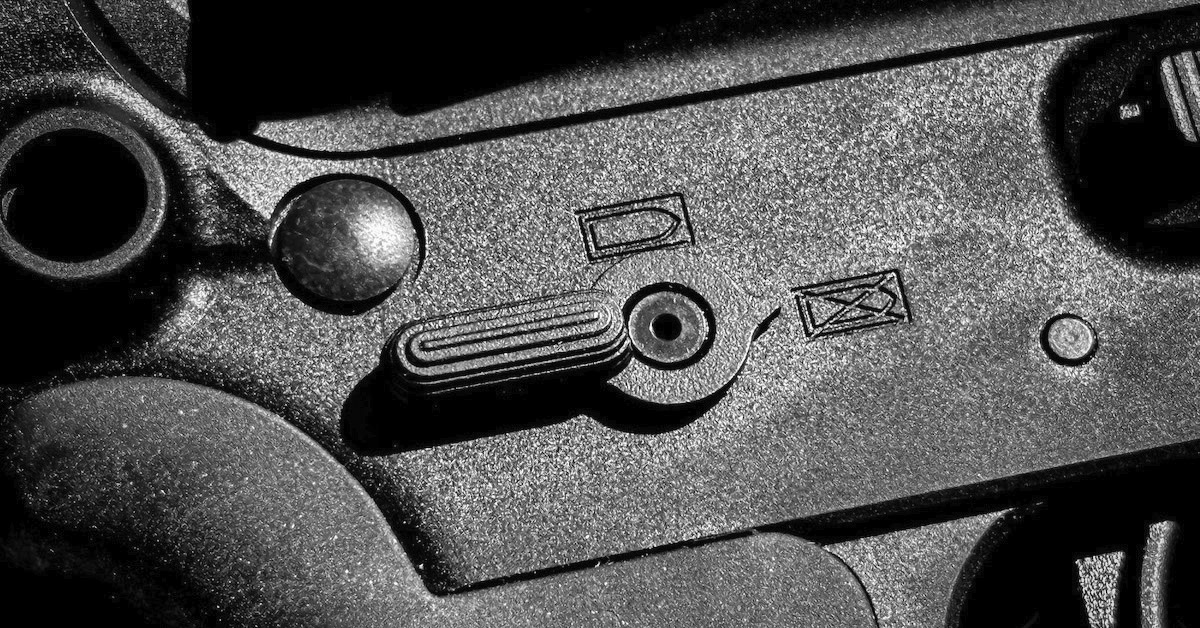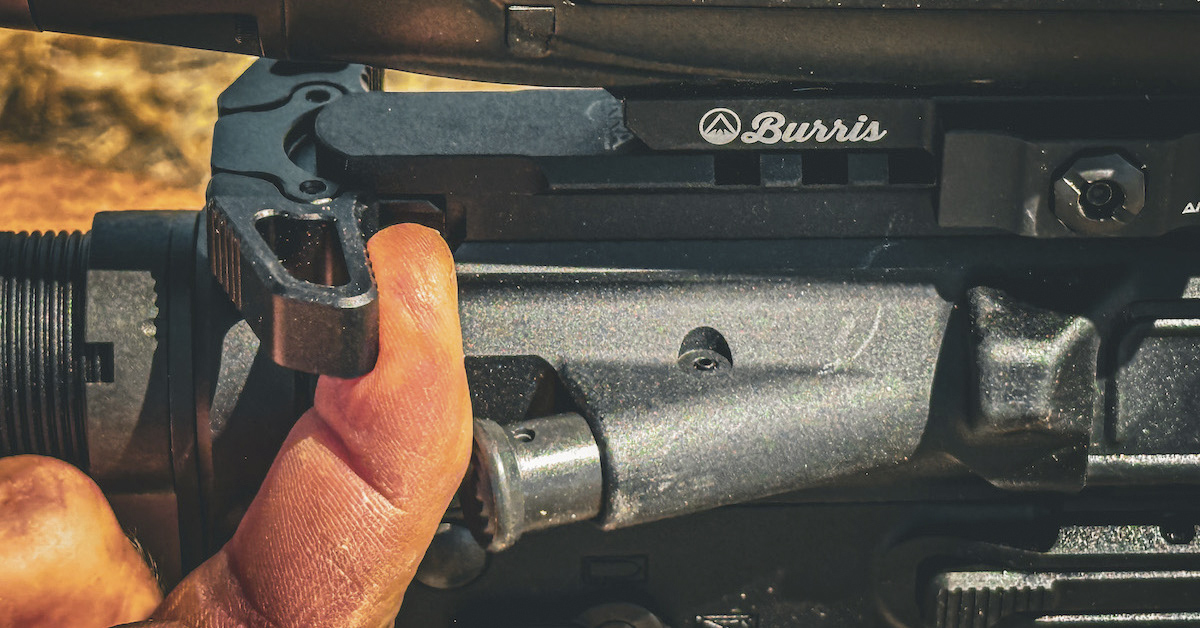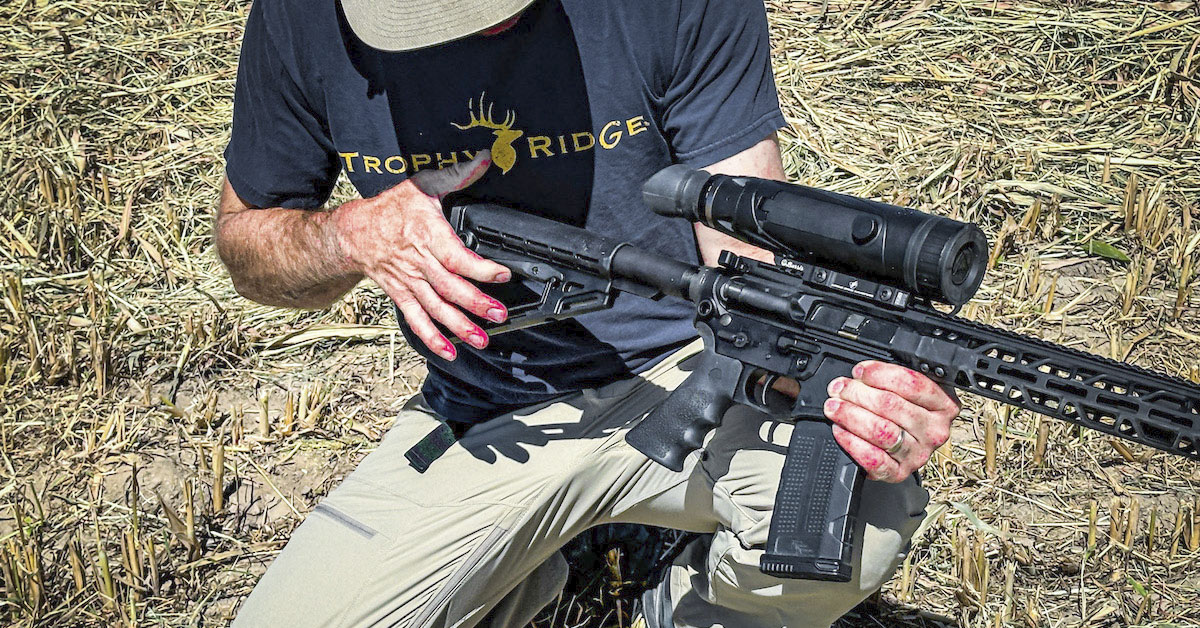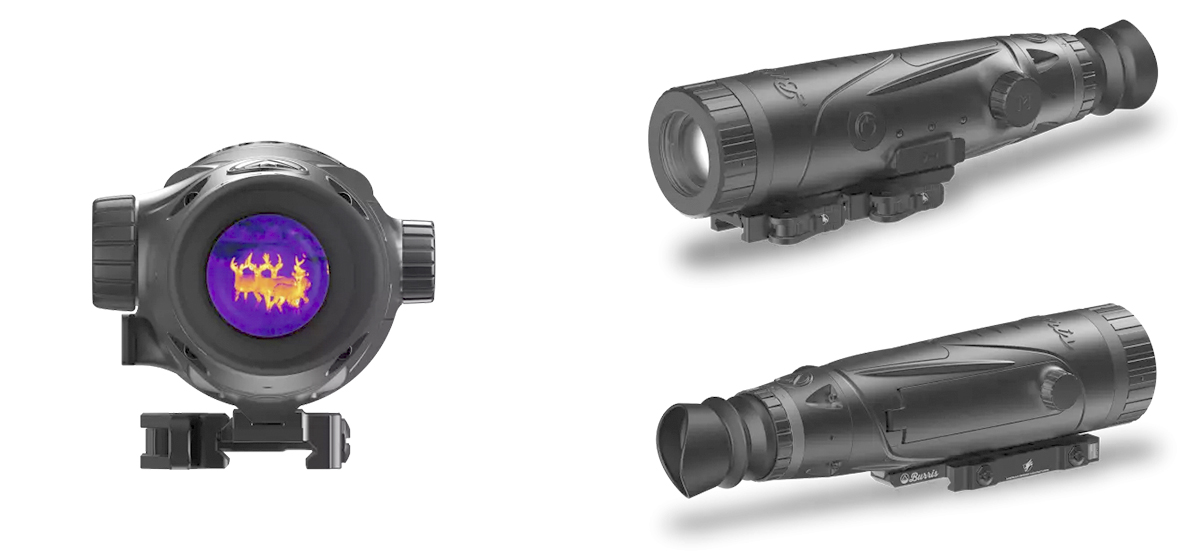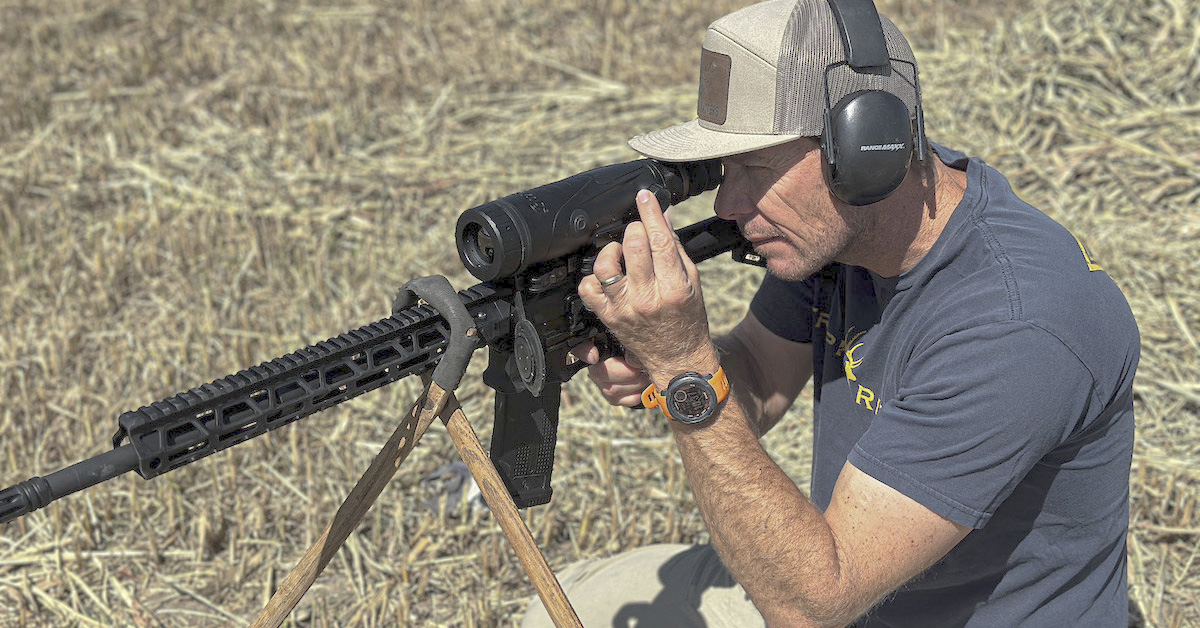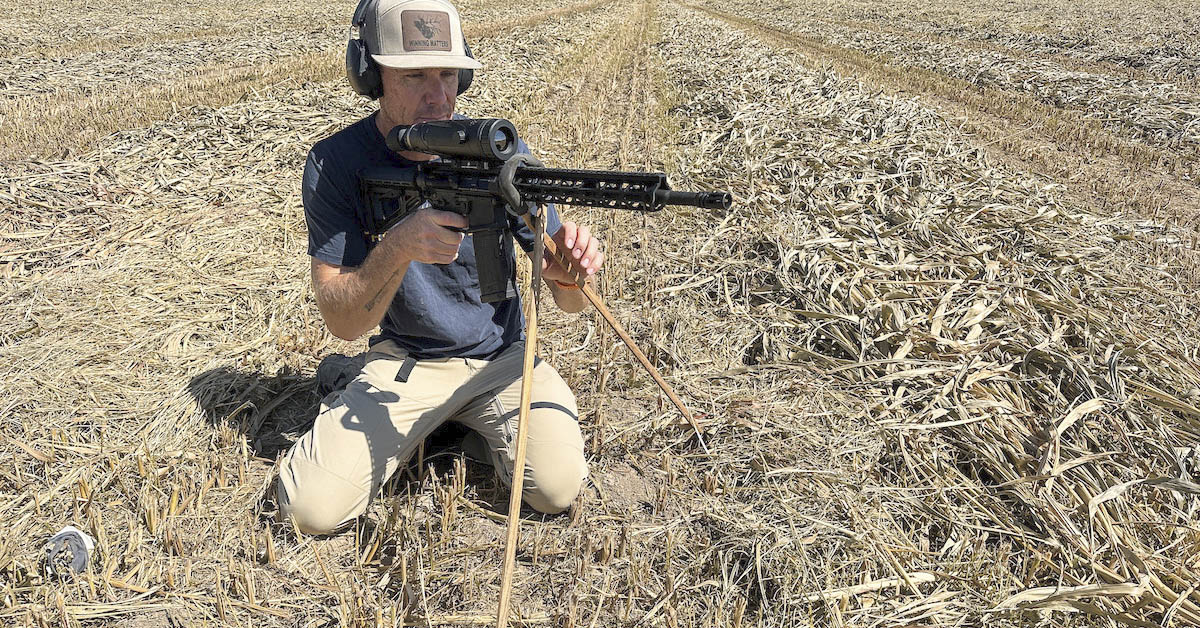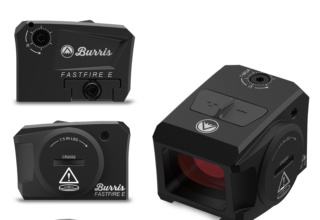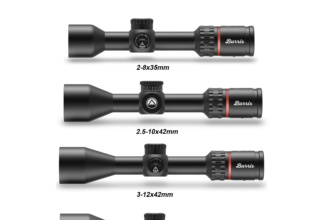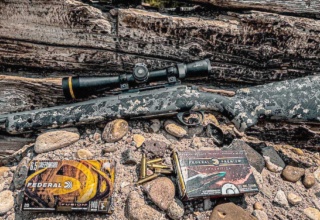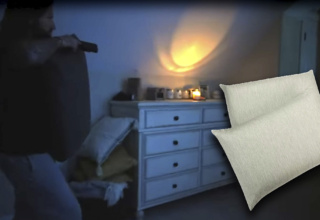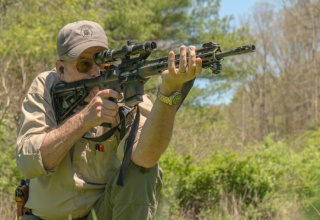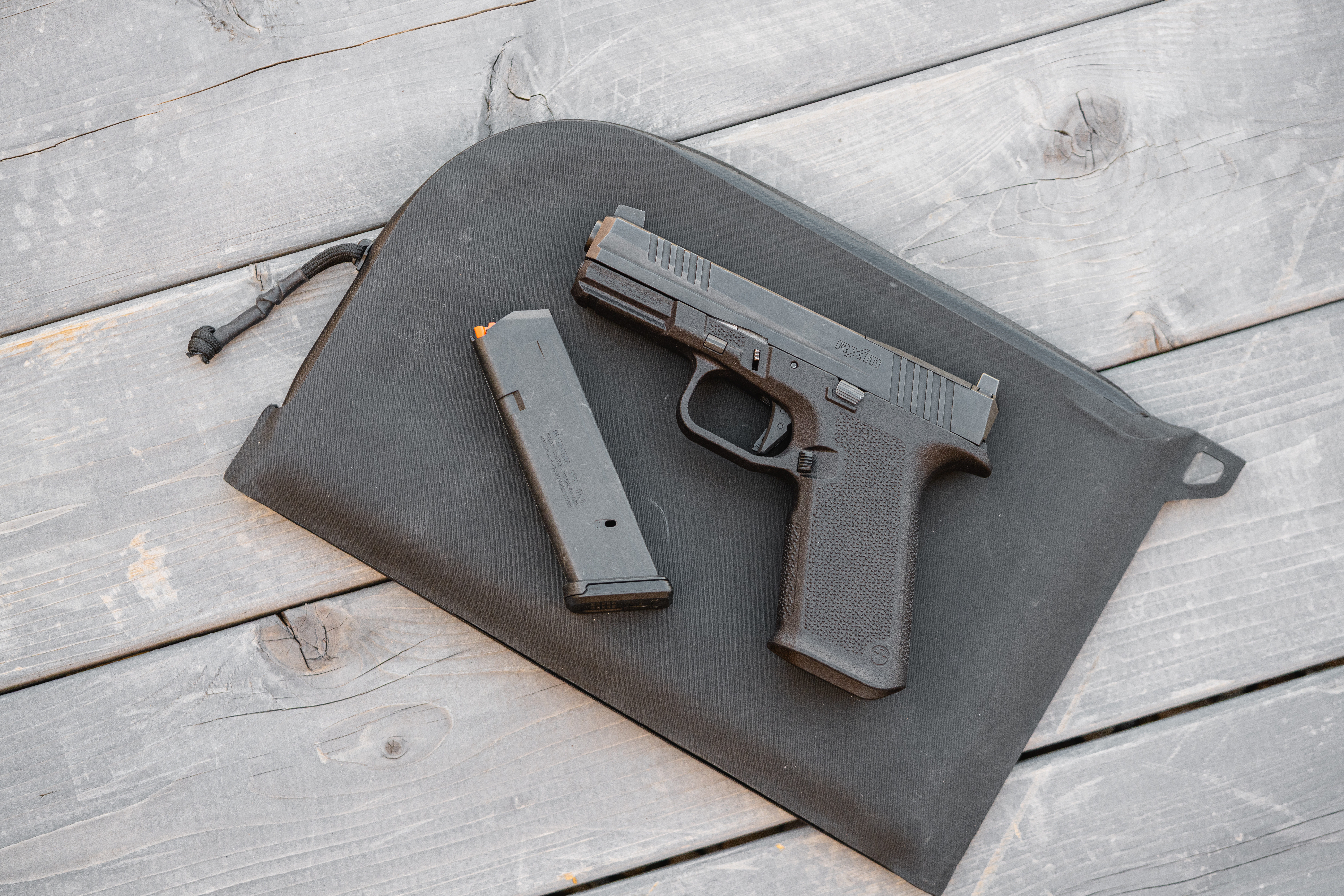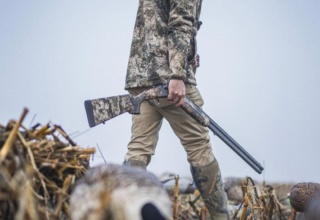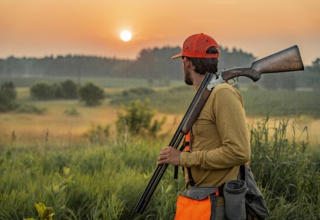Whether you’re looking for a rifle/scope combo for ranch defense or an excellent nighttime predator duo, Rock River’s BT-2 ATR and Burris BTS35 v3 640 thermal are great options
by Jace Bauserman
I’m not a left-handed shooter; however, many of my buddies are, and I feel bad for them.
Why?
According to recent studies, only ten percent of the population is lefthanded. That means 90 percent are not. If you were a manufacturer, for what group, righties or lefties, would you make sure you had an adequate product selection?
Not to say gun, bow, and accessory companies don’t make left-handed models. They do. Yet one of my buddies waited six months for his left-handed rifle, and I bought mine off the shelf. Another south-paw hunting amigo of mine recently ordered a new compound bow. He’s still waiting for it.
You get the point. Being a left-handed shooter has its drawbacks. Over the years, both my buddies taught themselves to shoot right-handed. Sure, they still prefer products engineered for their dominant hand, but they’ve learned to manage, and product availability is the biggest reason.
I get excited when manufacturers create ambidextrous rifles, bows, and accessory models. When a person — right or left-handed — can easily grab and use the same product, that product gets attention.
Enter Rock River’s BT-2 ATR Ambidextrous Tactical Rifle. Chambered for 5.56mm and .223 Rem., this six-position adjustable buttstock rifle measures 32.25 inches with the stock fully retracted and 35.5 inches extended.
At first glance, it screams Rock River. The design is sleek, and it was apparent while pulling the AR from the box that it was cloaked with advantageous tactical and accuracy-enhancing features.
I began this article by writing about right- and left-handed shooters, so let’s start there.
The new BT-2 billet lower receiver is machined for ambidextrous bolt catch/release and magazine release systems. Thanks to these innovative systems, any shooter can swap the bolt catch/release and magazine release button to either side of the firearm’s receiver. The process isn’t complicated, and with the ambidextrous safety selector switch, anyone can take this rifle to the field and enjoy customizable functionality.
Rock River positioned the safety on both receiver sides, meaning no swapping sides or disassembly is required. The ambidextrous safety switch allows right- and left-handed shooters to manipulate the safety quickly.
These features would be enough if I knew nothing else about this rifle. Innovation should be rewarded, and I appreciate that RRA created a fully ambidextrous AR-style rifle.
Other ambidextrous-enhancing functions include the rounded, balanced, and free-floating BT-2 handguard. The handguard measures 13 inches long, increasing hand positioning, and the bottom and sides feel excellent in the hand. The guard is also M-LOK compatible.
With the magazine removed, I worked the Radian Raptor charging handle. It’s generally smooth and can be operated by pulling the left or right of the handle — another ambidextrous feature. Operation is easy.
I depressed the stock lever in the 6-position NSP-2 Car Stock. An audible click is heard, and the stock locks into place to ensure proper position when manipulated.
I also enjoyed the fit and feel of Houge’s Beavertail Grip. I love the vertical nature of a pistol grip, and my fingers fell easily into the rubberized grip’s recessed grooves.
The rifle sports a 16-inch lightweight chrome-lined barrel with a1:9 twist rate. The upper and lower are made from 7075 T6 billet aluminum.
Adding The Thermal
I have experience with Burris’ thermal lineup of optics. Last year, I tested the BTS35 v2 thermal for our Born Hunting site. I liked the scope’s ease of use, and for a thermal wearing a price tag of $3,000, it sported a litany of purposeful technologies.
Using a mount from American Defense Manufacturing, I installed the new Burris BTS35 v3 640 thermal optic to exact eye-to-optic alignment. My only complaint — and it’s a small one — is the scope’s design, which brings the rear of the optic well behind the charging handle. Fortunately, the generous size of the Radian Raptor charging handle eases charging operations despite the obstacle.
I always recommend reading manufacturer instructions, and that is, once again, the case here. The more you read about this thermal, the more you learn. Setup time will be cut in half, and you can quickly take advantage of features like the 10 customizable reticles, picture-in-picture, hot-spot tracking, and more.
The scope is like a tank. It was built for rugged field use. The 800G shutter ensures shockproof performance, and its IP67 rating means it’s waterproof. I’ve also found minimal dust and debris build-up with no top-mounted raised buttons.
I highly recommend playing with the nine hotness settings ranging from Black Hot to Blue Hot to Sepia and every other temperature range to make objects with higher temperatures pop. Typically, I find one setting that works well with my eyes and stick with it. Of course, this takes time and lots of nighttime playing. I suggest mounting the scope to a tripod or setting it in shooting sticks and testing it on your dogs and cats. You want to know what temperature color setting works best before you take the rifle afield.
With this optic, running out of power is never a worry. The battery can be quickly swapped out using the right-side battery port door or by connecting the scope to an external power source.
Picture-in-Picture is an excellent feature, and it better magnifies the main image in the display. PIP boosts primary image magnification to increase accuracy if you have a coyote or hog in the distance.
Another winning feature is that the scope pairs with the BurrisConnect App, which allows you to create and upload custom ballistic profiles.
On The Range
Zeroing the scope is easy, and because the shootability of the rifle is excellent, the process takes little time. Before we dive into the zeroing process, though, I found RRA’s Two Stage Ultra Match Varmint trigger crisp and smooth. There is no creep, and a wide trigger creates more surface area for the index finger to engage. If you like a thin trigger, you won’t love the Ultra Match, but if you like a trigger that falls into the index finger’s first knuckle and extends upward a bit, you’ll love this one. I liked it a lot.
To zero your scope, you must select the zeroing distance in the on-screen menu. The rotary knob allows you to cycle through distance options quickly, and I recommend starting at 50 yards.
The rotary knob system is genius. It eliminates the need for multiple, often confusing buttons. The system was inspired by video game interfaces, and the single knob and power button eliminate mistakes and make using this unit in the dark a joy.
When sighting in, be sure you have a large target face and a sizeable blank face with no bullet holes. Then, aim at the target’s center and fire two shots. Next, measure the distance between those two shots, both horizontally and vertically, from your aiming point.
From this point, start in step 3 under the zeroing subheading in your owner’s manual. Once we did this, our scope was dialed to 300 yards in less than 15 minutes.
Our go-to ammunition was Hornady’s 50-gr. CX Superformance ammo. I’m not a big-time target shooter who loves to punch paper and ring steel. I like to shoot critters. Knowing this, I opt for field-proven ammo, and Hornaday’s 50-gr. CX Superformance is brutal on coyotes, bobcats, and other predators. Plus, the 1:9-inch rifling twist is perfect for steering these 50-grain rounds downrange with extreme accuracy. I make it a rule not to shoot beyond 300 yards at night, so I didn’t test this rifle/scope/bullet combo any further.
A Few Things to Keep In Mind
Chances are, if you’re buying a thermal scope, you’re a nighttime predator hunter or want to become one. While thermal scopes attached to an AR platform could work for homestead and ranch defense, I use them mostly for hunting.
Something to keep in mind is that while this $4,200 thermal is loaded with features like video recording and smartphone control features, it doesn’t have an onboard rangefinder.
One of the hardest things about nighttime shooting is ranging. It’s tough to tell how far away the target is. For this reason, I recommend a thermal rangefinding monocular or binocular. This will eliminate praying and spraying moments, and nothing is more frustrating than trying to scan using a rifle-mounted thermal optic. Nighttime ventures are so much more fun when you go with a buddy. This way, one person can use the thermal monocular or binocular to scan, and the other can remain ready on the sticks.
Final Thought
I’ve tested several ARs and thermal optics, and this pair is an excellent choice for hunting. And, of course, optics are easily swapped with the Picatinny rail system.
RRA BT-2 Operator ATR Specifications
- Caliber: 5.56mm NATO chamber for 5.56mm and .223 Rem.
- Lower Receiver: RRA LAR-BT2 billet
- Upper Receiver: RRA LAR-BT2 billet A4
- Barrel: 16-in. lightweight, chrome-lined
- Twist Rate: 1:9
- Gas System: low-profile gas block
- Trigger: RRA Two-Stage Ultra Match Varmint
- Handguard: RRA BT-2 13-in. lightweight free-float rail, M-LOK compatible
- Buttstock: RRA six-position NSP-2 Car Stock
- Pistol Grip: Hogue beavertail grip
- Weight: 7 lbs.
- Length: 32.25 in. retracted/35.5 in. extended
- Includes: one magazine, case, 5-slot Picatinny rail, QD sling mount, manual, and warranty information
Burris BTS35 v3 640 Specifications
- Resolution: 640×480
- Pixel Size: 12µm
- Focal Length: 35mm F1.0
- Focusing: manual focus
- Visual Angle: 12.5° x 9.4°
- Frame Rate: 50 Hz
- Digital Zoom: 1x to 8x
- Eye Relief: 48 mm
- Weight: 27.2 ounces
- Dimensions: 11.7 in. x 3.1 in. x 2.5 in.


